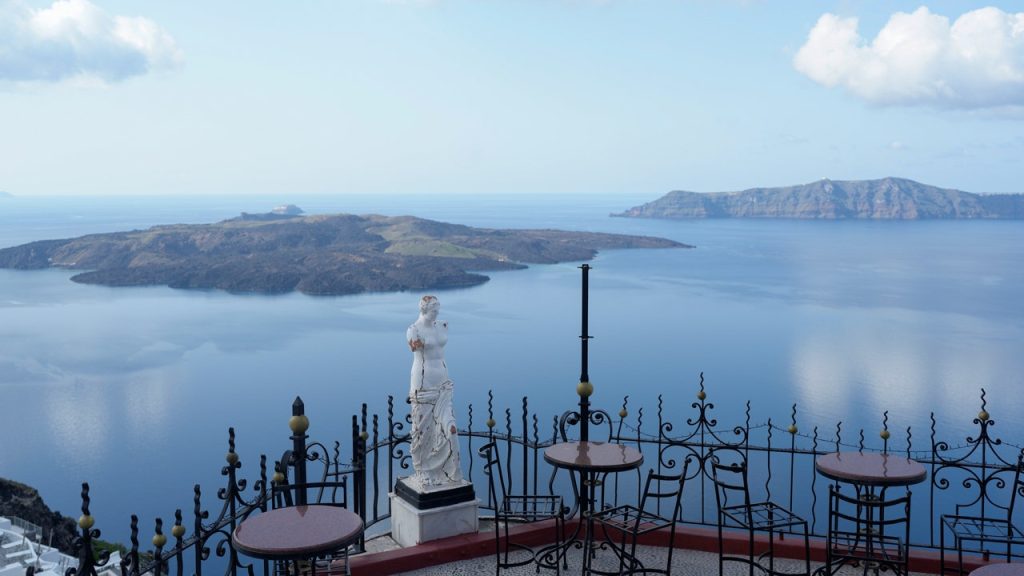A swarm of over 200 undersea earthquakes has rattled the Aegean Sea islands, popular tourist destinations, over a three-day period, prompting local authorities to implement precautionary measures. Emergency crews have been deployed, access to certain coastal areas near cliffs has been restricted, and hotels have been instructed to drain swimming pools to minimize potential damage. Despite the heightened seismic activity, Greek experts have stated that the earthquakes are not linked to Santorini’s volcano, famous for a catastrophic eruption over 3,500 years ago. The persistent tremors, many registering magnitudes above 4.5, have nevertheless raised concerns about the possibility of a larger seismic event.
The surge in earthquake activity prompted the closure of schools on Santorini and the deployment of emergency crews. Nearby islands, including Amorgos, Anafi, and Ios, also saw precautionary measures implemented as the tremors continued. Prime Minister Kyriakos Mitsotakis urged islanders to remain calm and heed the instructions of the Civil Protection authority. Mobile phone alerts warned of potential rockslides, and the frequent earthquakes generated audible rumbles, adding to the anxiety. Civil Protection Minister Vasilis Kikilias stressed that the measures were precautionary, urging citizens to adhere to safety recommendations.
While experts have ruled out a connection to Santorini’s volcano, the pattern of seismic activity has prompted government officials to meet with scientists to assess the situation. The frequency of the earthquakes, occurring every 10 to 20 minutes in some instances, has unnerved residents and visitors alike. Locals expressed anxiety and worry, with some describing the experience as unprecedented. Despite the ongoing tremors, life continued, with events such as the Santorini Philharmonic Orchestra performance proceeding as scheduled. However, the underlying concern remained palpable.
Authorities advised against large indoor gatherings and urged people to avoid areas susceptible to rockslides. Hotels were instructed to drain swimming pools to mitigate potential damage to buildings in the event of a larger earthquake. Fire service rescuers established a staging area near the island’s main hospital, with some families choosing to spend the night in their cars. The unsettling seismic activity prompted some residents and visitors to seek ferry or plane tickets to leave the island, seeking respite until the situation stabilized.
The ongoing tremors sparked a mix of fear and resilience among the island’s inhabitants and visitors. Some, like Nadia Benomar, a long-term resident, felt compelled to leave temporarily, while others, like returning restaurant worker Yiannis Fragiadakis, remained undeterred, hoping for a return to normalcy and the start of the holiday season. Tourists, like Soo Jin Kim from South Korea, expressed a mixture of worry and curiosity, closely monitoring the situation while continuing their vacation plans. The island’s vulnerability to seismic events was underscored by its history, marked by the devastating volcanic eruption that shaped its iconic crescent shape and profoundly impacted the ancient Minoan civilization.
Santorini, a renowned tourist destination attracting millions of visitors annually, faces the challenge of balancing its vibrant tourism industry with the inherent risks associated with its geological location. The island’s allure, derived from its stunning landscapes and rich history, is juxtaposed with the ever-present possibility of seismic activity. Seismologist Gerasimos Papadopoulos acknowledged the heightened risk, noting the increasing number and magnitude of tremors, as well as the northeastward shift of epicenters. While the earthquakes are tectonic rather than volcanic, the evolving situation demands vigilance. Local authorities designated gathering points for potential evacuations, emphasizing the precautionary nature of these measures while urging residents to remain calm and avoid exaggerated reports.










